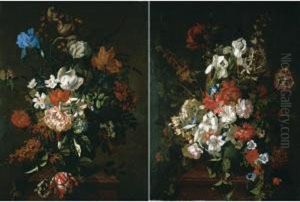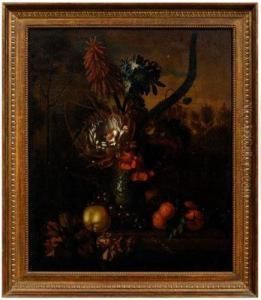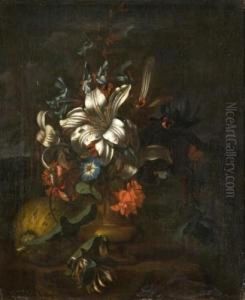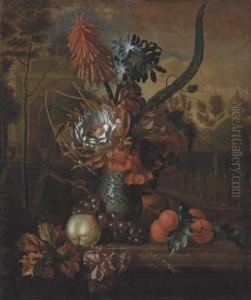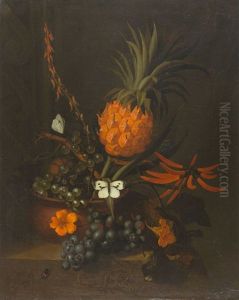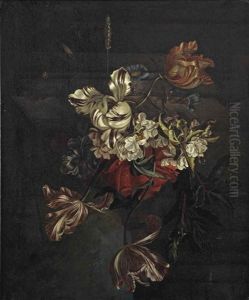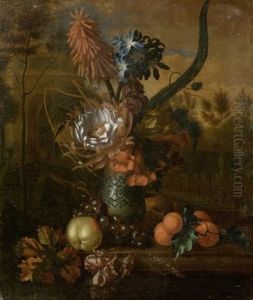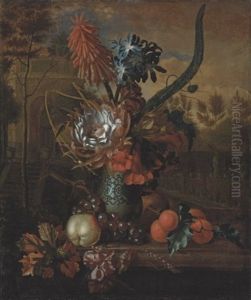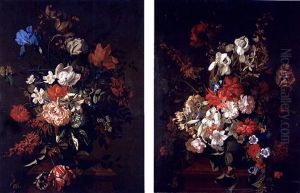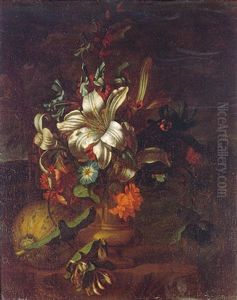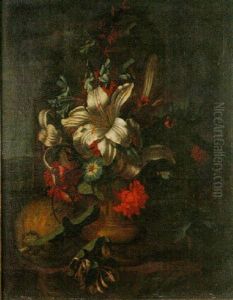Karel Borchaert Voet Paintings
Karel Borchaert Voet, a Flemish painter and engraver, was born in 1670 in Antwerp, a city renowned for its vibrant artistic community during the 17th and 18th centuries. Voet's life and career were deeply rooted in the rich cultural and artistic heritage of the Flemish region, which had been home to numerous influential artists before him. Despite the prominence of his contemporaries, Voet managed to carve out a unique niche for himself within the Baroque movement, which dominated European art at the time.
Voet's artistic journey began under the tutelage of prominent artists in Antwerp, where he honed his skills in painting and engraving. His work is characterized by meticulous attention to detail, a hallmark of Flemish art, and a deep appreciation for the interplay of light and shadow, a key element of Baroque aesthetics. Voet's subjects ranged from religious themes, which were prevalent in the period, to more secular portraits and landscapes, demonstrating his versatility as an artist.
Throughout his career, Voet contributed significantly to the artistic landscape of the Low Countries, receiving commissions from both religious institutions and wealthy patrons. His works were celebrated for their technical proficiency and emotive qualities, capturing the spiritual and worldly aspirations of his era. Despite the acclaim he received during his lifetime, Voet's legacy has been somewhat overshadowed by the more prominent figures of the Flemish Baroque, such as Peter Paul Rubens and Anthony van Dyck.
Karel Borchaert Voet died in 1745, leaving behind a body of work that, while not as widely recognized today, remains an important testament to the richness and diversity of Flemish art in the Baroque period. His paintings and engravings continue to be studied and admired for their craftsmanship and contribution to the evolution of European art.
